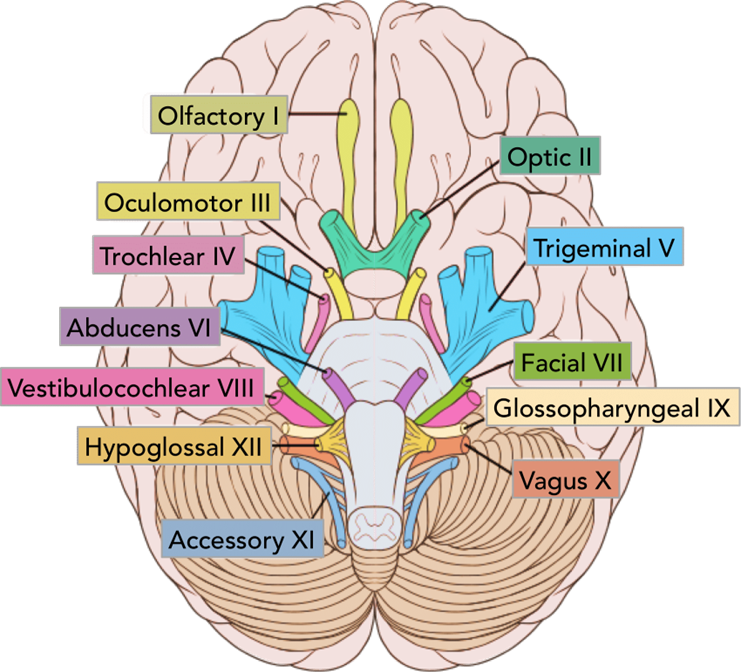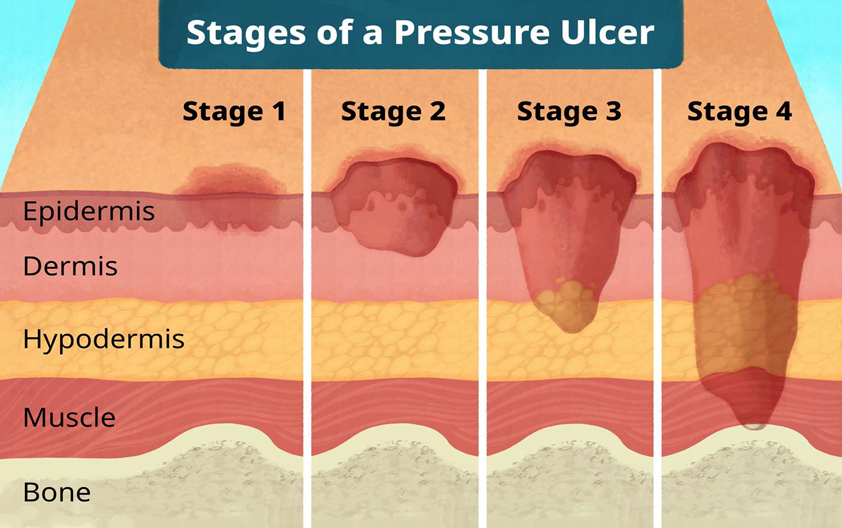A nurse is assessing a client’s cranial nerves. Which methods should the nurse use to assess cranial nerve V?
Ask the client to clench their teeth and assess facial sensation.
Ask the client to identify scented aromas.
Ask the client to read a Snellen chart.
Ask the client to raise his eyebrows.
The Correct Answer is A
Choice A Reason:
Cranial nerve V is the trigeminal nerve, which has both motor and sensory functions: Motor function: The nurse can assess this by asking the client to clench their teeth while palpating the masseter and temporalis muscles for strength. Sensory function: The nurse can assess this by lightly touching the client's face in different areas (forehead, cheeks, and jaw) with a cotton ball or sharp/dull object to check for sensation.
Choice B Reason:
Asking the client to identify scented aromas is a method used to assess cranial nerve I (Olfactory), not cranial nerve V. Cranial nerve V (Trigeminal) is assessed by testing facial sensation and motor functions such as chewing.

Choice C Reason:
Asking the client to read a Snellen chart is a method used to assess cranial nerve II (Optic), which is responsible for vision. This method does not assess cranial nerve V
Choice D Reason:
Asking the client to raise his eyebrows is a method used to assess cranial nerve VII (Facial), which controls facial expressions. This method is not used to assess cranial nerve V.
Nursing Test Bank
Naxlex Comprehensive Predictor Exams
Related Questions
Correct Answer is D
Explanation
Choice A Reason:
“Records that the client sees the procedure as necessary” is incorrect. The nurse’s role in signing the consent form is not to document the client’s perception of the necessity of the procedure. This responsibility typically falls to the healthcare provider who explains the procedure and its necessity to the client.
Choice B Reason:
“Determines the client does not have a mental illness” is incorrect. While assessing the client’s mental status is part of the overall care, the nurse’s signature on the consent form does not specifically indicate this. The nurse’s role is to witness the client’s signature and ensure they are giving informed consent.
Choice C Reason:
“Assists that the nurse has explained the risks and benefits of the procedure” is incorrect. It is the responsibility of the healthcare provider performing the procedure to explain the risks and benefits. The nurse may reinforce this information but does not primarily provide it.
Choice D Reason:
“Confirms the client is competent to provide consent” is correct. The nurse’s signature on the consent form indicates that the nurse has witnessed the client signing the form and has verified that the client is competent to provide informed consent. This includes ensuring the client understands the information provided and is making the decision voluntarily.
Correct Answer is C
Explanation
Choice A Reason:
Alginate dressings are typically used for wounds with moderate to heavy exudate because they are highly absorbent. Stage I pressure ulcers do not usually produce exudate, making alginate dressings unnecessary and inappropriate for this type of wound.
Choice B Reason:
Hydrogel dressings are designed to provide moisture to dry wounds and are more suitable for wounds with minimal to no exudate. While they can be used for stage I pressure ulcers, they are not the most common choice as these ulcers do not typically require additional moisture.
Choice C Reason:
Transparent dressings are ideal for stage I pressure ulcers because they protect the skin from friction and shear while allowing for continuous observation of the wound. These dressings maintain a moist environment, which is beneficial for healing, and are easy to apply and remove without causing additional trauma to the skin.

Choice D Reason:
Wet-to-dry gauze dressings are generally used for debridement of necrotic tissue in more advanced wounds. They are not suitable for stage I pressure ulcers, which do not have necrotic tissue and do not require debridement.
Whether you are a student looking to ace your exams or a practicing nurse seeking to enhance your expertise , our nursing education contents will empower you with the confidence and competence to make a difference in the lives of patients and become a respected leader in the healthcare field.
Visit Naxlex, invest in your future and unlock endless possibilities with our unparalleled nursing education contents today
Report Wrong Answer on the Current Question
Do you disagree with the answer? If yes, what is your expected answer? Explain.
Kindly be descriptive with the issue you are facing.
